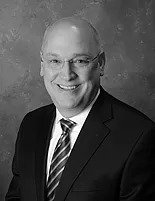The Executive Presence Checklist
By Tom Tischhauser
The Executive Presence Checklist
By Tom Tischhauser
May 14, 2019
The Executive Presence Checklist
Many of our coaching engagements include spending time on executive presence.
It’s a fascinating topic due to its highly subjective nature. The best way to describe executive presence is that you know it when you see or experience it.
To help you become more aware of your own executive presence, ask yourself these questions:
Am I Self Aware?
-
Do I know my strengths and gaps?
-
Do I have good political radar?
-
Am I confident, without arrogance?
Do people trust me?
-
Do I keep the organization’s agenda before my own?
-
Do I do what I say?
How is my appearance?
-
Do I look credible?
-
Is my wardrobe professional and current?
-
How is my personal grooming?
-
Do I look like someone people want to listen to?
Am I engaged/engaging?
-
Am I attentive at meetings and in conversations?
-
Can I defuse and facilitate during spirited discussions?
Do I value relationships?
-
Am I networking to learn?
-
Am I comfortable meeting new people?
Do I have strong presentation and conversational skills?
-
Am I a good story teller, user of examples, illustrations?
-
Do I have a good “you factor” with appropriate eye contact and body language?
-
Do I stop talking long enough to listen?
-
Do I pause to think about responses?
-
Do I ask good, thoughtful questions?
Is my information credible, accurate?
-
Do I know what I am talking about with facts or do I consistently leverage my opinion?
Do people defer to me?
-
Am I frequently asked for my opinion?
-
Do colleagues frequently come to me to bounce ideas around?
-
Does anyone care what I think?
Am I genuine?
-
Do I share an appropriate level of personal stories?
-
Am I comfortable changing my opinion given new information?
Do I get good results?
-
Are my results and output the highest quality?
-
Am I constantly renewing processes to ensure the best results?
Recognize executive presence as a journey. Focus on one or two elements at a time.
Once those become second nature, move to the next two. Also, be a good “observer”.
Look at the leaders around you. Who comes across as the leader in the room? What are they doing? Which leaders don’t impress you? Why or why not?
Most of executive presence is being self-aware and making the appropriate corrections to connect with your organization and stakeholders. Take the time to look at yourself
through the lens of your audience.

Tom Tischhauser is an Executive Coach at Wynstone Partners. Tom specializes in 1-on-1 executive coaching, public board reviews, and creating custom speeches for organizations. Tom believes in improving leaders because successful leaders breed successful business.
May 14, 2019
The Executive Presence Checklist
Many of our coaching engagements include spending time on executive presence.
It’s a fascinating topic due to its highly subjective nature. The best way to describe executive presence is that you know it when you see or experience it.
To help you become more aware of your own executive presence, ask yourself these questions:
Am I Self Aware?
-
Do I know my strengths and gaps?
-
Do I have good political radar?
-
Am I confident, without arrogance?
Do people trust me?
-
Do I keep the organization’s agenda before my own?
-
Do I do what I say?
How is my appearance?
-
Do I look credible?
-
Is my wardrobe professional and current?
-
How is my personal grooming?
-
Do I look like someone people want to listen to?
Am I engaged/engaging?
-
Am I attentive at meetings and in conversations?
-
Can I defuse and facilitate during spirited discussions?
Do I value relationships?
-
Am I networking to learn?
-
Am I comfortable meeting new people?
Do I have strong presentation and conversational skills?
-
Am I a good story teller, user of examples, illustrations?
-
Do I have a good “you factor” with appropriate eye contact and body language?
-
Do I stop talking long enough to listen?
-
Do I pause to think about responses?
-
Do I ask good, thoughtful questions?
Is my information credible, accurate?
-
Do I know what I am talking about with facts or do I consistently leverage my opinion?
Do people defer to me?
-
Am I frequently asked for my opinion?
-
Do colleagues frequently come to me to bounce ideas around?
-
Does anyone care what I think?
Am I genuine?
-
Do I share an appropriate level of personal stories?
-
Am I comfortable changing my opinion given new information?
Do I get good results?
-
Are my results and output the highest quality?
-
Am I constantly renewing processes to ensure the best results?
Recognize executive presence as a journey. Focus on one or two elements at a time.
Once those become second nature, move to the next two. Also, be a good “observer”.
Look at the leaders around you. Who comes across as the leader in the room? What are they doing? Which leaders don’t impress you? Why or why not?
Most of executive presence is being self-aware and making the appropriate corrections to connect with your organization and stakeholders. Take the time to look at yourself
through the lens of your audience.

